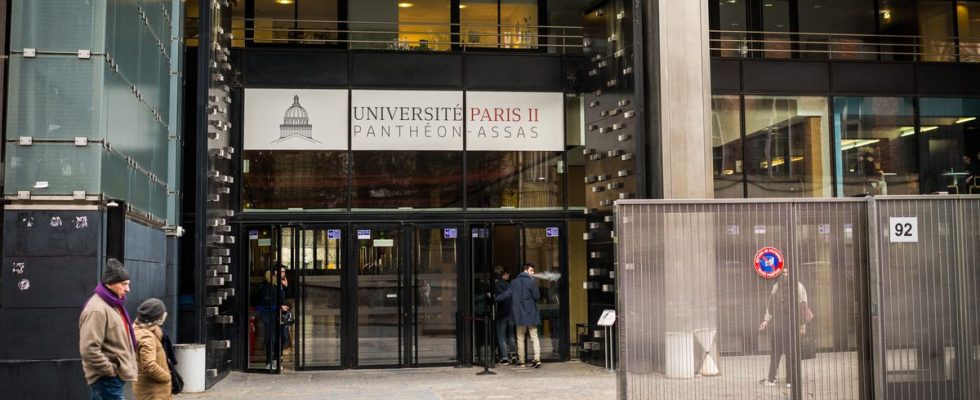The good news: the level of education has risen in France over the decades. The bad: not for everyone. Because according to the report of the Observatory of inequalities published this Thursday, inequalities of access to higher education have increased in recent years. “The education system has not ceded any of its social elitism,” summarizes Louis Maurin, director of the Observatory. Between the generations born in the early 1980s and those born in the early 1990s, the rate of access to higher education almost stagnated for the working classes (it went from 39.5% to 41.1%) , while it still increased by seven points for the favored classes (from 65.5% to 72.6%), underlines the report.
Consequence: the children of workers represent 10% of university students, 7% of students in preparatory classes for the Grandes Ecoles and 2% of students in higher normal schools. Conversely, the proportion of children of senior executives is increasing: 33% of university students, 53% in preparatory classes and 63% in higher normal schools. In the end, over ten years, if the proportion of young graduates with a bac + 5 has progressed at the national level, the gaps between social backgrounds have increased. In 2018-2020, 40% of children of executives and intermediate professions aged 25 to 29 obtained a master’s degree, doctorate or diploma from a Grande Ecole, compared to 13% of children of employees and workers. In 2008-2010, these proportions were 22% and 6% respectively.
The college, a selection chamber
This failure of the democratization of higher education has its origins in the school history of the students. Because as the report shows, it is at the end of the 3rd year that the courses diverge. Workers’ children represent a third of CAP or vocational baccalaureate students, but make up only 19% of general or technological high school classes. The children of executives, on the other hand, are very rare in CAP (4.5%) and professional baccalaureate (8%). But with 30% of the workforce, they are overrepresented on the benches of general or technological high school.
“The 3rd is a key moment for orientation. This is the period when the academic difficulties encountered by some students crystallize. And those who come from disadvantaged backgrounds have already internalized the fact that certain sectors were not made for them. There is a form of social determinism and the phenomenon of self-censorship can already be seen”, analyzes Louis Maurin. What attests a study from the 2020 Ministry of Education, which shows that only 59% of children of workers with a certificate mark between 10 and 12/20 request orientation in a general high school, compared to 91% of children of executives with the same mark. Sociologist Jules Donzelot, education researcher associated with the Émile Durkheim Center (Ehess), goes further. He sees in it “the failure of secondary school to make socially disadvantaged students succeed academically”. According to him, it is at the end of middle school that “socially disadvantaged students more often than others fail to meet the academic requirements of the 4th and 3rd levels, partly due to the effect of a lack of cultural capital at the House. »
The social biases of Parcoursup
Moreover, for children from the working classes who go on to a general stream, the cost of higher education can be a brake on their choice: “If you live in the provinces, going far to study is sometimes impossible, as much as the price of housing has become inaccessible for many, ”continues Louis Maurin.
In addition, Parcoursup contains some social biases, noted by Jules Donzelot. First of all, it is clear that to fill out their application file, parents often represent valuable coaches. “However, there are very strong inequalities in the ability of families to provide such support, depending on social origin in particular. It would therefore be necessary to internalize the preparation for Parcoursup, with dedicated timetables in the timetables, and teachers mobilized to best help each student according to their needs, ”he underlines. According to him, it would also be necessary to “anonymize the school of origin, in order to prevent certain schools from being favored over others because of their reputation or their geographical location”.
The social openness of the Grandes Ecoles remains very limited
Another finding of the Observatory of inequalities: the most selective sectors (engineering or business schools, medicine, etc.) which lead to the most favored social positions remain closed to the children of workers and employees. However, many Grandes Ecoles implemented social openness measures in the early 2000s, which generally consist of offering support to students from disadvantaged backgrounds so that they acquire the academic and cultural capital they lack. “But they are mainly used to support the communication of elitist establishments,” said Louis Maurin.
For Jules Donzelot too, this approach has limited effects. To be more effective on the subject, the grandes écoles should, according to him, “modify the content of the paths of excellence to make them more compatible with the culture and profile of these young people. As we say in England, “More means different”. To accommodate more disadvantaged young people, the internal structure must be modified, instead of adjusting the entrance. It would be necessary to “deselitize” the paths of excellence: to extract everything that pertains to the arbitrary culture of the inter-society of favored families, and to emphasize only knowledge and skills. »
The BTS, training courses that have succeeded in social diversity
In the end, only one higher education sector receives the praise of the Observatory of Inequalities in terms of social openness: the BTS, which host 23% of workers’ children. “The fact that these courses give pride of place to practice and that the professions to which they lead are identifiable is a factor of attraction for them”, notes Louis Maurin. The introduction of quotas for technological baccalaureate holders and professional baccalaureate holders at the entrance to the BTS and BUT has also had positive effects on social diversity. An example to follow ?

